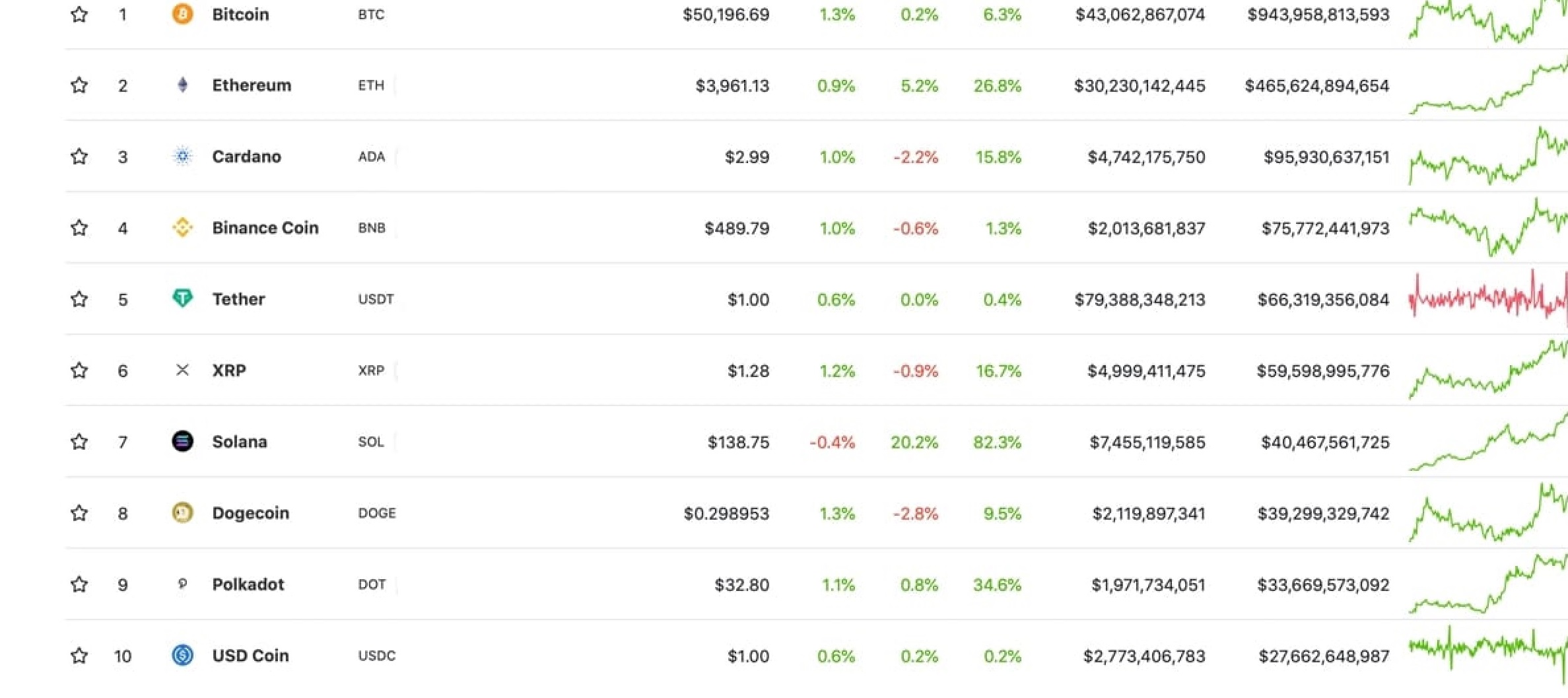On September 2, Cardano’s ada token broke through $3 for the first time after it was announced that the network had completed a smart contracts upgrade.
It has fallen back to $2.61 at this writing, but it is still up more than 1,600 per cent from the start of this year.
But analysts say the Cardano platform could become the most valuable in the cyber world within this year.
According to the creator of the Cardano network and adas, Charles Hoskinson, the potential of Cardano could be compared in the future with companies such as Amazon, Facebook and Netflix: “Cardano aims to become a global financial computer. It is here for all the people who could use a decentralised currency to create decentralised services,” he insists.
But who is Charles Hoskinson and why is his work at the focal point of the cryptocurrency industry?
Hoskinson, chief executive officer of the blockchain research and engineering company IOHK, is one of the founders of Ethereum, the second-largest cryptocurrency in terms of market capitalisation. After the success of Ethereum, Hoskinson left to start his own company called Cardano. Today, Cardano’s ada token is third on the list for market cap, with a market cap of $80.84 billion.
The Cardano project began in 2015 with research into solving some of the challenges faced by both the Bitcoin and Ethereum networks. Scalability was one, speed was another – the issue of speed is based on the size of the blocks in the blockchain. Ultimately, Hoskinson was the first to come to market with the Proof-of-Stake solution replacing the Proof-of-Work used by blockchain (and by Ethereum at the time).
This was the first improvement that attracted multi-million-dollar investment into Cardano’s ada. Since then, Hoskinson has made many more improvements, for example, multiple processing layers for settlements and computations, and the ability to easily upgrade its network in the future. Separating the settlement and computation layers has resulted in much lower fees to users.
Smart contracts were the only technology missing from Cardano’s ada, and now that it has been added, using a more complex and flexible approach than that of Ethereum, investors are piling into the new crypto.
Cardano currently has between 100 and 150 developers actively working on its development. These factors make the cryptocurrency one of the most actively-developed projects in the blockchain space today, and this has built confidence among investors that Cardano will be able to achieve the commitments on their development roadmap.
The underlying technology of the platform does not depend on ‘super’ computers to process transactions and generate new ADA units, but rather values the percentage of coins a miner owns, out of the total outstanding – his/her stake – rather than the processing power it has.
Charles Hoskinson, founder of Cardano, estimated that his network used less power than 0.01 per cent of the Bitcoin network, potentially increasing the energy efficiency of a proof-of-work system like today’s leaders by more than four million. Bitcoin is working with its miners to replace fossil-fuel generated electricity with renewables and nuclear power. Much of this is taking place in China where most bitcoin is mined.
Another reason Cardano’s ada is valued is that it is on the cutting edge of cryptocurrency research. For example, it is now working on a new concept called “zero-knowledge cryptography.” When a bitcoin is sent to another user, the whole blockchain has to validate the transaction to ensure that it’s real and that the coin hasn’t been double-spent (meaning being used twice). But if you have zero-knowledge proofs, checking the proof gives you the same level of certainty much faster.
“The proof could be kilobytes in size, and the blockchain exabytes. That’s really the only way we’re going to scale on the smart-contract side and transaction side,” Hoskinson told Bloomberg in a recent interview.
“But it’s also really cool because you can do things like preserve human rights or ensure a whistleblower is protected, or allow freedom of association. What happens if you’re gay in Iran, for example? If you get caught, you could be stoned to death. So, how do you meet other people? You need to have some system to do that,” he added.
IOHK is working with Ethiopia’s Ministry of Education on one of the world’s biggest blockchain projects – a universal student credentialing system, Hoskinson said.
“We’ve got about a million people onboarded. It’s K through 12, and we’re going to do the first launch, I think, sometime in September or October. The goal is to get five million students. It’s going to be used first as a universal credentialing system – so basically their grades, their academic accomplishments, if they get honours, whatever. It’s our intention to compete amongst others for the whole national ID system, which is about 110 million people.”
Projects like this hark back to the original intentions when bitcoin was founded by the pseudonymous Satoshi. The original idea wasn’t just to make money, but also to create decentralised systems that challenge the way traditional business is done. Hoskinson, through all of the attacks on cryptocurrencies, has held firm to these values.






Click here to change your cookie preferences